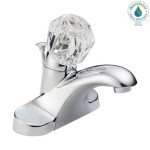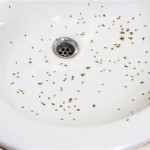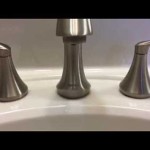Why Are There Earthworms In My Bathroom?
Finding earthworms in a bathroom is an unsettling experience. These creatures, typically associated with gardens and soil, appear out of place in a clean, tiled environment. The presence of earthworms in a bathroom signifies an underlying issue, often related to moisture, access points, and organic matter. Determining the source of the problem is crucial for effective management and prevention. This article will explore the various reasons why earthworms might find their way into a bathroom, and outline the steps to address the issue.
Earthworms are annelids, belonging to the class Oligochaeta. These invertebrates thrive in damp environments rich in organic matter, consuming decaying plant material and contributing to soil aeration and nutrient cycling. Their bodies, comprised of segmented rings, aid in movement through soil. They require constant moisture to survive, as their skin must remain moist for respiration. This need for moisture primarily dictates their habitat and influences their behavior, particularly their movement patterns.
Bathrooms, especially those with plumbing issues or ground-level access, can inadvertently provide the conditions necessary for earthworm survival. Understanding these contributing factors is the first step in preventing future incursions. Ignoring the problem could lead to increased earthworm activity and potentially further property damage due to underlying moisture problems.
Moisture and Drainage Issues: A Prime Attractant
Earthworms are highly sensitive to moisture levels. A primary reason for their presence in a bathroom is the existence of persistent dampness. This moisture can originate from several sources within the bathroom environment.
Leaky pipes, whether located under the sink, behind the toilet, or within the bathroom walls, create an ideal environment for earthworms. Even small, slow leaks can saturate the surrounding areas, providing the constant moisture source they require. The area beneath the floor, often inaccessible for regular inspection, is particularly susceptible to accumulating moisture from leaking pipes. These hidden leaks can go unnoticed for extended periods, fostering a suitable habitat for earthworms and other moisture-loving organisms.
Clogged drains can also contribute to the problem. Slow-draining sinks, showers, or bathtubs can lead to water pooling and seeping into the surrounding areas. This standing water saturates the materials around the drain, attracting earthworms searching for damp environments. Organic matter accumulating within the drain also serves as a food source for the earthworms, further encouraging their presence. Regularly cleaning drains and promptly addressing any drainage issues is essential to prevent this type of infestation.
Condensation, especially in poorly ventilated bathrooms, can also contribute to moisture buildup. Warm, humid air condenses on cold surfaces, such as tiles and pipes, creating a damp environment that earthworms find attractive. Ensuring adequate ventilation, either through the use of exhaust fans or by opening windows, helps reduce condensation and minimizes the appeal of the bathroom to earthworms. Addressing issues such as dripping faucets and showerheads is critical in reducing moisture levels and rendering the bathroom less appealing.
Furthermore, inadequate sealing around the base of toilets and showers and bathtubs can allow water to seep underneath, creating a constantly damp environment that attracts earthworms. Inspecting and resealing these areas can prevent water from accumulating and forming a breeding ground for earthworms.
Access Points: How Earthworms Enter the Bathroom
While moisture creates a suitable habitat, earthworms also need a means of entering the bathroom. Finding and sealing these access points is crucial for preventing future incursions.
Cracks and gaps in the foundation of a building can serve as pathways for earthworms to enter the bathroom. These cracks often form due to settling, temperature changes, or seismic activity. Earthworms can easily navigate through these openings, especially if the surrounding soil is damp and soft. Sealing any visible cracks in the foundation, both inside and outside the bathroom, helps prevent earthworms from accessing the interior of the building. Using a waterproof sealant is recommended to further protect against moisture penetration.
Gaps around pipes and other utility lines that enter the bathroom can also provide access for earthworms. These areas are often poorly sealed, leaving openings through which earthworms can easily crawl. Inspecting the areas around pipes, drains, and other utility lines for gaps and sealing them with caulk or expanding foam can effectively block potential entry points. Ensure the sealant used is waterproof to prevent moisture from compromising its integrity.
Floor drains, if improperly sealed or damaged, can also serve as entry points. Earthworms can travel through the drainage system and emerge into the bathroom through these drains. Regularly inspecting floor drains for damage and ensuring they are properly sealed can prevent this type of entry. Replacing damaged drain covers and using drain stoppers can further secure these potential access points.
In some cases, earthworms may even enter through poorly sealed windows or doors, particularly if the bathroom is located on the ground floor. Inspecting the seals around windows and doors for gaps and repairing or replacing them as necessary can help prevent earthworms from entering through these openings. Installing weather stripping and door sweeps can further enhance the seal and prevent entry by earthworms and other pests.
Organic Matter: A Food Source for Earthworms
While moisture and access are critical, the presence of organic matter can further attract and sustain earthworm populations in a bathroom environment.
Accumulation of organic debris in drains, such as hair, soap scum, and food particles, provides a food source for earthworms. These decaying materials create a nutrient-rich environment that supports their survival. Regularly cleaning drains with a drain cleaner or a mixture of baking soda and vinegar can help remove organic buildup and discourage earthworm activity. Preventing food scraps from entering drains is also a crucial preventative measure.
Decomposing materials under the floor, such as decaying wood or damp insulation, can also serve as a food source for earthworms. These materials provide a constant supply of organic matter that sustains earthworm populations. If there is evidence of water damage under the flooring, addressing the underlying moisture problem and removing these decaying materials is crucial. Replacing damaged flooring and insulation with materials resistant to moisture and decay can help prevent future infestations.
Even small amounts of spilled potting soil or decaying plant matter can attract earthworms to a bathroom. Houseplants, especially if overwatered, can create a damp environment that attracts earthworms. Maintaining proper drainage for houseplants and promptly cleaning up any spilled soil can help prevent earthworms from being drawn to the bathroom. Consider using self-watering planters or adjusting watering schedules to avoid overwatering. Additionally, ensure that houseplants are not infested with pests that could attract earthworms.
Furthermore, if a bathroom is located near a garden or lawn, the presence of organic-rich soil close to the building's foundation can contribute to earthworm activity. Earthworms may migrate from the garden or lawn into the bathroom in search of moisture and food. Implementing barriers, such as gravel or concrete, around the foundation can help deter earthworms from entering the building. Removing mulch and decaying vegetation close to the foundation can also reduce their attractiveness to earthworms.
Effectively addressing the presence of earthworms in a bathroom requires a comprehensive approach. Identifying and mitigating sources of moisture, sealing potential entry points, and eliminating sources of organic matter are essential steps. Regular maintenance and vigilance can help prevent future infestations and maintain a pest-free bathroom environment.

How To Get Rid Of Earthworms In Bathroom Follow These Simple Steps

Are You Spotting Worms In Your Toilet Vista Ca Here S What Going On 1st Choice Plumbing Flood Restoration

How To Get Rid Of Earthworms In The Bathroom ستورم Storm

Worms In Toilet Here S What Going On Mr Rooter

How To Get Rid Of Earthworms In The Bathroom ستورم Storm

How To Get Rid Of Worms In The Toilet Quick Tips
Why Are There Black Worms In The Toilet How Can You Get Rid Of Them Quora

How To Get Rid Of Earthworms In The Bathroom ستورم Storm

How To Get Rid Of Earthworms In Your Home

How Do Earthworms Get Into Our Toilets Wonders Reader After Finding One In His Bathroom All About Worms
Related Posts







